Boost your organization, processes, and people with data science
Data science uses automated data analysis and machine learning to uncover new insights from (big) data and support data-driven decision-making. It can be applied to nearly every process within an organization. Whether you’re evaluating a mortgage application, predicting customer churn, or optimizing delivery routes, data science empowers your organization, enhances processes, and strengthens your workforce. By implementing data science, your operations become more effective and efficient, boosting employee satisfaction and driving better outcomes. In this article, you’ll discover how to successfully integrate data science into your organization and understand what it takes to make it work. You’ll also explore the tools, techniques, and algorithms best suited to your challenges. First, we’ll define data science in clear terms, outline its 25 key benefits, and conclude with seven actionable tips and a practical checklist.
What is data science?
Data science involves the automated processing and analysis of various types of data. Its primary goal is to optimize processes and improve decision-making across the organization. While it often focuses on analyzing big data and creating machine learning models, its applications extend beyond these areas. These models identify patterns and causal relationships within data that would otherwise be impossible for the average person to detect.
Data science definition
At first glance, the term “data science” may seem abstract and unclear. To simplify, here’s a definition anyone can understand:
Data science is the process of selecting, filtering, cleaning, combining, analyzing, visualizing, and extracting business value from all relevant data.
This process is well illustrated in the following figure, where raw (big) data is transformed into valuable information, actionable insights, and new knowledge. These insights are then converted into the best actions (for the moment) and process improvements. While this may involve statistics and algorithms, they are not always required.
Today, data science is often equated with artificial intelligence (AI), but that’s not entirely accurate. Data science encompasses much more, including KPI dashboards, reports, and standard data analysis. It shares similarities with business intelligence (BI), but this article primarily focuses on the algorithmic aspects of data science.
 Figure 1: The goal of data science visualized as a pyramid, moving from raw data to optimal actions and process improvement.
Figure 1: The goal of data science visualized as a pyramid, moving from raw data to optimal actions and process improvement.
Data science should be purposefully implemented to address specific challenges and solve real-world problems within your organization. It’s not just a tool for data scientists – it’s a practical science designed to support better decisions and continuous process improvements. Its greatest impact is often seen in operational decisions, particularly those involving assessment processes that occur on a daily basis.
Data science examples
 Data science delivers value by helping you identify which issues and decisions in your organization can be automated. By doing so, you make its applications more concrete and actionable. Below are some compelling examples:
Data science delivers value by helping you identify which issues and decisions in your organization can be automated. By doing so, you make its applications more concrete and actionable. Below are some compelling examples:
- How can you forecast future demand for specific products more accurately?
- How can machine learning optimize your inventory and capital utilization?
- What improvements can you make to your recruitment and selection processes to hire the best candidates?
- What’s the optimal price for a specific hotel room based on demand?
- What’s the likelihood that a machine or piece of equipment will break down within the next few days or weeks?
- Can camera footage from an entertainment area help identify potentially violent situations?
- Are there objects or subjects in an image, and how can they be identified by name?
Organizations make assessments daily – often multiple times a day. As an expert, you strive to gather all relevant information, analyze it thoroughly, and reach a well-informed conclusion.
Data science goes a step further by automating these assessment processes. It not only considers far more variables than a human could but also eliminates the randomness often present in manual decision-making. This leads to more accurate and consistent outcomes. If you’re ready to explore how data science can work for your organization, contact us for personalized advice.
Understanding the value of data science
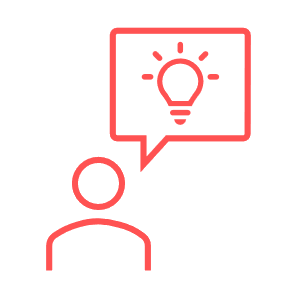 To truly grasp the meaning of data science, start by identifying where decision-making and assessment processes occur within your organization. These processes might include evaluating the value of an asset, determining whether it’s safe to approve a loan, or assessing the likelihood of fraud in an application or claim. Data science also plays a key role in optimizing operational decisions, such as calculating the fastest route for a delivery driver managing 100 packages in a day or a salesperson planning visits to multiple clients.
To truly grasp the meaning of data science, start by identifying where decision-making and assessment processes occur within your organization. These processes might include evaluating the value of an asset, determining whether it’s safe to approve a loan, or assessing the likelihood of fraud in an application or claim. Data science also plays a key role in optimizing operational decisions, such as calculating the fastest route for a delivery driver managing 100 packages in a day or a salesperson planning visits to multiple clients.
The benefits of data science are extensive. The key is to collaboratively uncover the most impactful applications for your organization. According to Hal Varian, a renowned economist at Google and professor emeritus at Berkeley, data science will become one of the most essential competencies for organizations in the coming decades.
Ready to get ahead? Talk to one of our data science specialists and gain the tools you need to lead the way.
The 25 benefits of data science
With years of experience in data science, AI, and machine learning, we understand better than anyone how to unlock their full potential. The benefits go beyond quick wins, like developing a standalone application – they extend to long-term advantages when data science is implemented strategically across your organization. Below, we outline 25 key benefits of applying data science techniques. The figure below highlights the top 10 in a more visually engaging way.
 Figure 2: A visual summary of the top 10 benefits of data science.
Figure 2: A visual summary of the top 10 benefits of data science.
- Eliminate the chaos of complicated spreadsheets.
- Achieve higher sales and a more profitable margin structure.
- Accelerate assessment processes throughout your organization.
- Personalize and differentiate more effectively.
- Seamlessly combine and analyze all types of (big) data.
- Reduce strain on both IT and operational systems.
- Create a single version of the truth – flexible yet reliable.
- Empower employees, teams, and managers to perform better.
- Avoid information overload and make data-driven decisions.
- Drive the creation and management of new knowledge.
- Enable managers to lead with vision and adopt a coaching approach.
- Strike a better balance between data-driven insights and intuition.
- Encourage creative exploration that opens up new opportunities.
- Gain a deeper understanding of your business model through reliable data.
- Boost employee engagement and loyalty.
- Increase transparency and prevent fraud.
- Enhance business risk management.
- Improve organizational flexibility, as discussed in our Dutch book The Agile Organization.
- Spark innovation by identifying strategic insights.
- Gain better control over market dynamics, forces, and turbulence.
- Anticipate and predict more accurately using AI models.
- Improve data quality with data science techniques.
- Enhance workplace happiness with smoother processes.
- Contribute to sustainability by reducing waste.
- Help individuals thrive in a healthy, streamlined organization.
Armed with these benefits, you can build a strong business case for data science and implement it effectively. Need support in setting up or optimizing your processes and decision-making? Contact one of our data science consultants today.
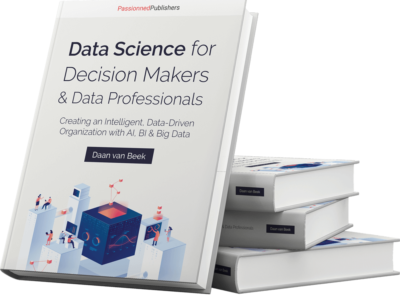 This unique Data Science book helps you understand the field and apply it to your organization. In 10 steps, this book guides you in creating a data-driven organization where all decisions are supported by Data Science. Take the first step now and order the book today.
This unique Data Science book helps you understand the field and apply it to your organization. In 10 steps, this book guides you in creating a data-driven organization where all decisions are supported by Data Science. Take the first step now and order the book today.
Data science management
To manage data science well, first of all, you need a fresh perspective on the field – and especially not a narrow one. This way, you can develop a sustainable and widely supported vision, ensuring that everyone in your organization understands the role and added value of data. Data science management focuses primarily on taking control and managing the process. A few factors are crucial and essential for success.
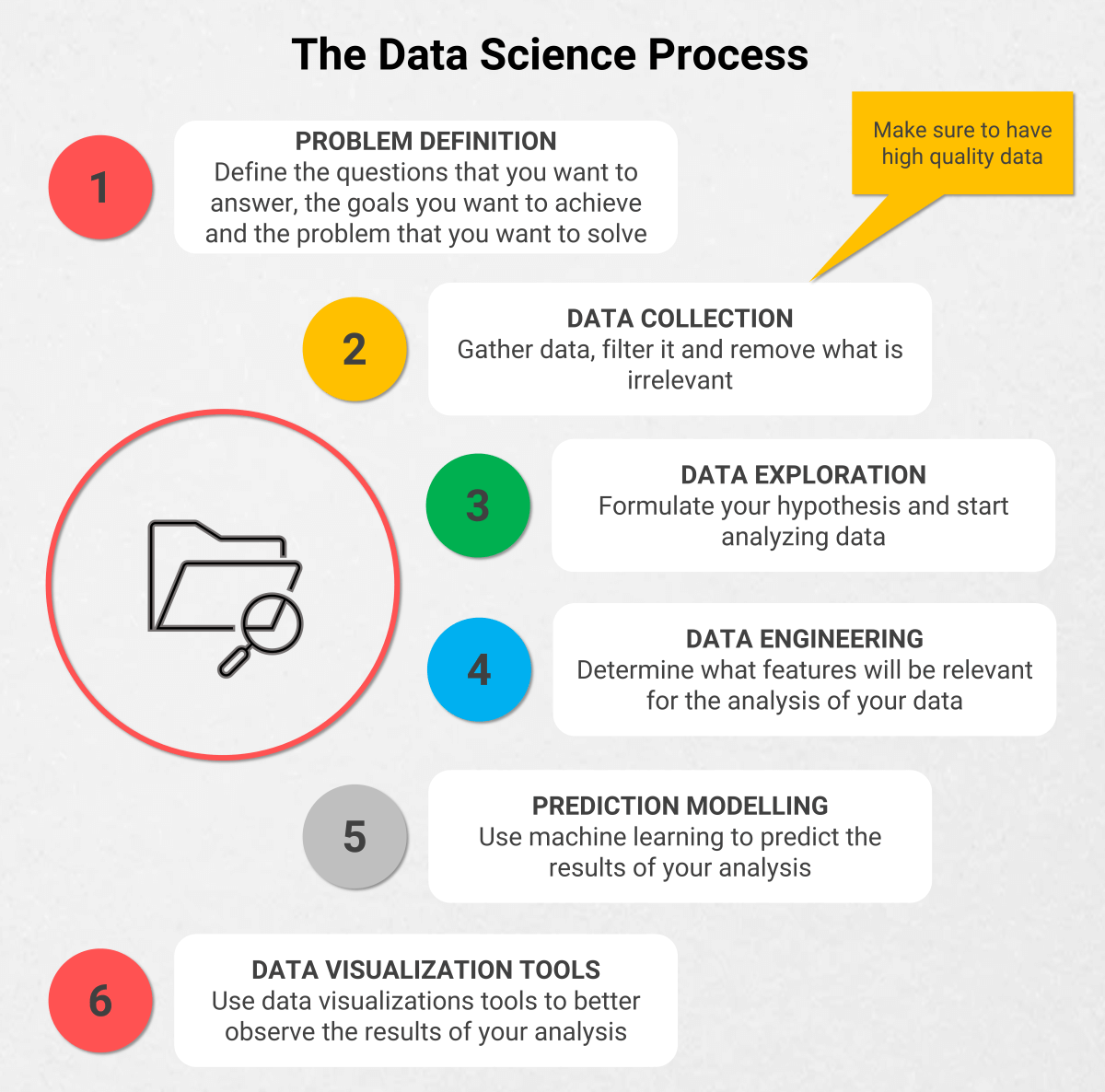 Figure 3: The process shows the steps to implement data science management in your company.
Figure 3: The process shows the steps to implement data science management in your company.
- Business-driven data science: Business needs and decision-making should guide the development of data science applications. As mentioned earlier, assessment processes are a prime example. Data science should not become an IT initiative or an IT-dominated effort. Instead, the business should lead the way, with IT providing support.
- Data science manager: This manager coordinates all strategic and operational data science processes within the organization, reporting directly to management or a board member. An experienced data science manager acts as a bridge-builder, understands the organization and its processes thoroughly, and translates business needs into IT solutions. See also the role of a BI manager.
- Data science roadmap: Business and IT collaborate to create a roadmap under the leadership of the data science manager. This roadmap includes several key elements: the organization’s strategic priorities and how data science will contribute to them, the products and services to be delivered using data science, the team with defined roles, the required data infrastructure (such as a data warehouse and data lake), and the necessary hardware and software.
- The impact on people: One often-overlooked aspect of data science management is its impact on people. A purely technocratic approach can overwhelm employees, making people management and change management critical for success. When decisions are automated by algorithms, resistance from decision-makers who feel sidelined is common. Consider carefully how you will address this in your organization.
Data science management takes business and decision-making as its starting point, appoints a bridge-builder as manager, develops a collaborative roadmap, and considers the impact on people.
A global data generation process
 Whether it’s purchasing data, sensor data, search queries, smart meters, or audio recordings of phone calls, people and machines are becoming increasingly integral to a global data generation process. Its scale and impact are still difficult to fully comprehend. However, by combining these diverse internal and external data sources, you can uncover entirely new and unexpected insights. These insights can then be used to develop valuable data products or data services. In essence, this is the greatest challenge in data science management: transforming raw data into meaningful and valuable products.
Whether it’s purchasing data, sensor data, search queries, smart meters, or audio recordings of phone calls, people and machines are becoming increasingly integral to a global data generation process. Its scale and impact are still difficult to fully comprehend. However, by combining these diverse internal and external data sources, you can uncover entirely new and unexpected insights. These insights can then be used to develop valuable data products or data services. In essence, this is the greatest challenge in data science management: transforming raw data into meaningful and valuable products.
What data science techniques are there?
With data science, you aim to predict future outcomes by identifying patterns in data that hold predictive value. But it doesn’t stop there. Beyond prediction, you can also classify and cluster data points. To achieve this, a variety of data science techniques are used.
Smash the complexity of data science engineering
While the techniques above may seem complex, they all boil down to leveraging computational power to quickly identify patterns in data and transform them into actionable AI models. For one situation, you might use a method based on decision trees; in another, you might rely on linear regression or genetic algorithms. These techniques enable computers to learn without requiring explicit programming.
Take neural networks, for instance – they mimic the workings of the human brain but rely heavily on the processing power of large-scale or distributed computing systems. Thankfully, ready-made libraries with a wide array of techniques are available, allowing you to deploy solutions immediately without reinventing the wheel. Don’t let the seemingly magical aspects of data science techniques intimidate you – there are practical tools and resources to make them accessible.
However, as data science advances to handle all of a person’s senses (hearing, seeing, smelling, and more), it’s crucial to focus on ethics.
Predictive maintenance
 One of the most widely discussed applications of data science is predictive maintenance. At its core, it involves making a key decision: what is the optimal time to perform preventive maintenance? Traditional organizations rely on rigid schedules, performing maintenance on machines or parts every few months or years by default. In contrast, predictive maintenance focuses on timing these interventions precisely when the likelihood of machine failure or downtime (a good example of a KPI) is at its highest.
One of the most widely discussed applications of data science is predictive maintenance. At its core, it involves making a key decision: what is the optimal time to perform preventive maintenance? Traditional organizations rely on rigid schedules, performing maintenance on machines or parts every few months or years by default. In contrast, predictive maintenance focuses on timing these interventions precisely when the likelihood of machine failure or downtime (a good example of a KPI) is at its highest.
Differentiate with data science: from scattershot to pinpoint precision
By leveraging photos and sensors, you can generate a continuous data stream, which data science can analyze automatically. This allows you to identify patterns that signal a part is at risk of breaking down. Performing maintenance only when it’s truly necessary not only saves significant costs but also increases production capacity and reduces waste by avoiding the disposal of perfectly functional components.
Data science equips you with the tools to differentiate with precision, often through fully automated processes. It transforms your approach from a scattershot hailstorm over an entire city to a precision strike on specific buildings.
Data-driven decision-making with data science
In many organizations, promising data science applications often fade away quickly, becoming “one-day wonders.” There is plenty of experimentation, and initial enthusiasm runs high, but without clear direction or a vision for the role of data science, these efforts lose momentum. The solution lies in first gaining a clear understanding of the decisions being made – or those that should be made – within your organization. By mapping these decisions, you can connect data science to concrete outcomes, providing immediate insight into its potential use cases. The diagram below can help guide this process.
 Figure 4: Like with BI & analytics, purposefully link data science to the decisions in your organization.
Figure 4: Like with BI & analytics, purposefully link data science to the decisions in your organization.
Start by focusing on operational decisions made daily, weekly, or monthly. For example, the decision to approve a loan for a startup or to replenish inventory for an item. Then follow the steps in the diagram: work backward from the necessary knowledge, information, and data needed to make these decisions more data-driven. Build on this foundation by considering the actions that follow the decision, performance tracking, reflection, and gained experience.
The impact grows exponentially as you allow data science algorithms to monitor or drive more processes.
Next, explore how you can automate all these steps with data science. Automation not only highlights the added value but also provides better direction and alignment across teams. By transitioning from experimentation to embedding data science as a structural part of your processes, you create a system where the impact multiplies as more processes are controlled or enhanced by data science algorithms.
7 tips for a lightning start with data science
 Want to get started with data science quickly and effectively? These tips will help your organization accelerate progress and immediately reap its benefits:
Want to get started with data science quickly and effectively? These tips will help your organization accelerate progress and immediately reap its benefits:
- What is your overarching plan, what are the goals in your organization, and how can you use data science to tap into them right away? Many companies and managers live in the delusion of the day and tend to react to everything without an overarching plan or strategy. Data-driven decision-making with data science is always centered on the operational, tactical, and strategic goals of the organization. So focus initially on the key performance indicators (KPIs) and the associated standards and targets.
- What does your data science roadmap look like? In organizations, data scientists still often operate as lone wolves. These organizations are often still traditionally structured or have managers who think one-dimensionally. In practice, this creates a significant gap between the world of data science and business administration. As a result, well-intentioned initiatives often turn out to be unsuccessful. A good BI roadmap and collaboration in a multidisciplinary team can help bridge these gaps and bring these worlds together.
- Focus on the required knowledge and skills of the team rather than relying entirely on expensive and unattainable superstars. Keep in mind that if such highly paid individuals suddenly move to a competitor offering a higher salary or better working conditions, your organization could face a significant setback. There’s also the risk that crucial processes that have just been implemented will immediately stall if this key individual leaves. Data science requires a collective effort from the entire team. Do you have a team with the right skills on board? Nurture that team, optimize existing talents, and balance overlapping competencies.
- Pay attention to collaboration and invest in open dialogue. Teams where members feel safe to share and debate differing opinions tend to produce the best improvement ideas and innovations.
- Invest in the core competencies associated with experimentation and innovation. Team knowledge and innovation processes are as crucial as technical expertise. These skills improve motivation and productivity among team members. Regularly assess the level of knowledge around innovation processes and team dynamics.
- Continually reflect on processes, mutual cooperation, and individual contributions within the team. This encourages personal growth and accelerates learning curves. It also provides an advantage over relying on a single data science specialist. Team feedback facilitates iterative learning cycles, which can often be supported through tools like PDCA improvement circles. Consider how reflection and collaboration are currently supported in your organization.
- Put personal growth at the center of your organization by investing in competency growth, team development, and alignment with organizational goals. Reflect on how you, your team, and your organization can move forward. Identify who and what is needed to achieve these objectives.
Data science tools
The market for data science tools is growing and evolving almost daily, a trend we continuously monitor with the BI & Analytics Guide 2025. This research highlights that, alongside well-established players such as Microsoft (with Power BI), SAS (with Visual Analytics), IBM (with Watson Analytics), SAP, and Tibco, open-source tools have experienced a significant surge in popularity. Many exciting developments are occurring in this space, particularly in programming languages like R and Python and platforms such as Hadoop, Dataiku, and RapidMiner.
- R offers a wide range of statistical and graphical techniques, including linear regression, nonlinear models, classical statistical tests, time series analysis, classification, clustering, and more. Its object-oriented design makes it easily extensible.
- Python is an object-oriented, extensible programming language equipped with powerful libraries for data manipulation and analysis. It is particularly well-suited for tasks such as website scraping.
- Both R and Python can be integrated with Hadoop and its MapReduce routines.
- RapidMiner is a platform where only the core is open source. It provides an integrated environment for machine learning, text mining, data mining, and advanced analytics.
Put together a balanced data science team that includes not just tech experts but also business consultants, data analytics translators, and business analysts.
Be mindful that data science, AI, machine learning, and robotics can significantly impact the current and future work of employees in your organization. Resistance to these changes is inevitable, so plan accordingly.
Data science checklist
Finally, here’s a handy checklist and five key considerations to increase your organization’s chances of success with data science.
- First, develop a shared, organization-wide vision of data science. Start by focusing on the potential and role of the field rather than the technology itself, but remain open to experimenting with it.
- First, take an inventory of the operational assessment processes within your organization. These processes often present the greatest opportunities for successful data science applications.
- Be aware that high-quality data is essential for data science. Poor data quality can pose significant risks. While errors in reports are often easy to spot, flaws in algorithms running behind the scenes may go unnoticed and lead to problematic outcomes.
- Assemble a well-rounded data science team that includes more than just technical experts. Ensure you have business consultants, data analytics translators, and business analysts on board.
- Be mindful that data science, AI, machine learning, and robotics can profoundly impact the current and future work of employees in your organization. Resistance to these changes is natural, so plan carefully to address it.
Want to explore more data science tips? Continue diving into the field below.
 Learn more about data science here
Learn more about data science hereDo you want to deepen your understanding of data science? Below is an overview of articles and resources to help you elevate your knowledge to the next level:
A solid understanding of data science is crucial for success. Without it, there’s a significant risk of falling short in your initiatives. For more guidance, see our 7 tips for success.
Getting started with data science right away?
Looking for inspiration or more information? Get in touch with our experienced data science team today. We’re here to help you take the next step.
About Passionned Group
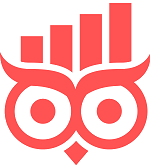 Passionned Group is a leading specialist in data science solutions and strategies. Our seasoned consultants assist organizations of all sizes in their journey to becoming intelligent, data-driven organizations. Every two years, we proudly host the Dutch BI & Data Science Award™.
Passionned Group is a leading specialist in data science solutions and strategies. Our seasoned consultants assist organizations of all sizes in their journey to becoming intelligent, data-driven organizations. Every two years, we proudly host the Dutch BI & Data Science Award™.
Frequently Asked Questions
When did data science originate?
In the 1960s, statisticians and mathematicians began developing algorithms for data analysis and statistical modeling. However, it wasn’t until after 2015 that the term “data science” became more widely recognized, thanks to advancements in big data, sophisticated algorithms, and increased computing power. You can find more information in our Data Science Book.
How is data science used in sports?
It can be used to analyze player performance, optimize game strategies, prevent injuries, and enhance scouting and recruitment. It also improves fan engagement through personalized experiences and helps teams maximize revenue with predictive analytics for ticket pricing and sponsorship effectiveness.
How is data science used in healthcare?
Data science is used to improve patient outcomes, optimize operations, and advance medical research. It can help in diagnosing diseases through predictive models, personalizing treatments using patient data, and monitoring health with wearable devices. It can also streamline hospital management, forecast patient needs, and accelerate drug discovery by analyzing vast datasets.
What does a data scientist do?
A data scientist primarily focuses on developing and applying machine learning models to analyze data and generate actionable insights.
Will data science be in demand in the future?
Yes, since organizations increasingly rely on data-driven decision-making. With the growing importance of AI, machine learning, and big data across industries, the need for skilled data scientists to analyze and extract insights will expand. Emerging fields like healthcare analytics, autonomous systems, and climate modeling further drive demand, making data science a critical and evolving profession.
Can you give some concrete applications of data science?
Using data science techniques, you can better predict the demand for certain products and services, optimize inventory levels, and forecast preventive maintenance for machinery. Additionally, data science can enhance recruitment and selection processes or predict expected attendance at festivals and events.
What is the difference between data science and business intelligence?
A business intelligence (BI) consultant works mainly with structured data, analyzing it and building data warehouses. A data scientist, on the other hand, deals with both structured and unstructured data and focuses on developing machine learning models using algorithms. While they differ in approach, data science and business intelligence often overlap and share similarities.
What does the data science process look like?
The data science process broadly consists of six steps: problem definition, data collection, data exploration, data engineering, machine learning modeling, and data visualization.
What programming languages and tools are available?
Data scientists use various programming languages depending on the task and their preferences. Popular choices include Python, R, and Julia, while Scala, MATLAB, and SAS are used in specific scenarios. Popular data science platforms include Hadoop, Dataiku, and RapidMiner.

 Artificial intelligence (AI) involves developing self-learning computer algorithms that can discover relationships – both existing and new – in (big) data. Eventually, these algorithms can start making decisions independently. The goal is to drastically improve the effectiveness and efficiency of processes. Read more about
Artificial intelligence (AI) involves developing self-learning computer algorithms that can discover relationships – both existing and new – in (big) data. Eventually, these algorithms can start making decisions independently. The goal is to drastically improve the effectiveness and efficiency of processes. Read more about 
 Deep learning is a specialized area of machine learning where algorithms learn from vast amounts of data. This technique mimics human brain capabilities, allowing computers to solve highly complex problems. It’s especially effective for working with unstructured and interconnected data sets. Examples include ChatGPT and other
Deep learning is a specialized area of machine learning where algorithms learn from vast amounts of data. This technique mimics human brain capabilities, allowing computers to solve highly complex problems. It’s especially effective for working with unstructured and interconnected data sets. Examples include ChatGPT and other 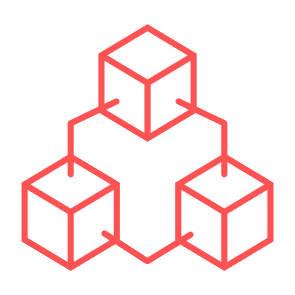
 Process mining combines various data science techniques, tools, and methods to analyze event logs as data sources. This technique helps visualize, analyze, monitor, and improve actual business processes.
Process mining combines various data science techniques, tools, and methods to analyze event logs as data sources. This technique helps visualize, analyze, monitor, and improve actual business processes.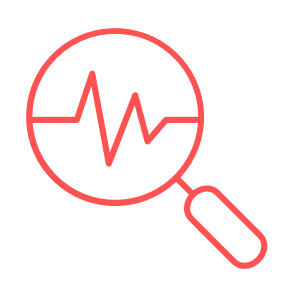 “The computer can see” is the literal meaning of the term “computer vision.” By using supervised learning – and increasingly, unsupervised learning – you can train a computer to recognize objects in photos, such as a flower. However, the most common application of computer vision remains facial recognition.
“The computer can see” is the literal meaning of the term “computer vision.” By using supervised learning – and increasingly, unsupervised learning – you can train a computer to recognize objects in photos, such as a flower. However, the most common application of computer vision remains facial recognition.
 Forecasting uses historical data to predict trends, such as the prices of real estate, fuel, or commodities. By analyzing patterns, organizations can make informed purchasing decisions, sometimes buying less or later to optimize resources. Forecasting also improves other processes, ensuring precise and efficient optimization.
Forecasting uses historical data to predict trends, such as the prices of real estate, fuel, or commodities. By analyzing patterns, organizations can make informed purchasing decisions, sometimes buying less or later to optimize resources. Forecasting also improves other processes, ensuring precise and efficient optimization. Generative AI, a rapidly evolving field, gained global attention in November 2022 with the release of OpenAI’s ChatGPT and DALL-E. Generative AI is expected to revolutionize functions across organizations, particularly in customer operations, finance, marketing, sales, and HR.
Generative AI, a rapidly evolving field, gained global attention in November 2022 with the release of OpenAI’s ChatGPT and DALL-E. Generative AI is expected to revolutionize functions across organizations, particularly in customer operations, finance, marketing, sales, and HR.



